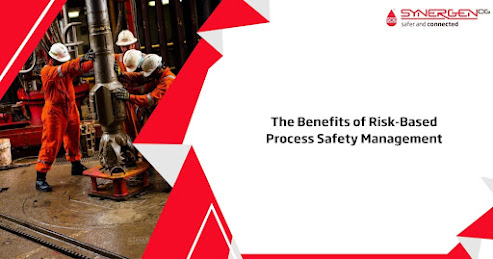The Benefits of Risk-Based Process Safety Management
In process safety, leaving things up to chance is not an option. The implementation of Risk-Based Process Safety Management (RBPS) affords numerous advantages, ensuring that operations involving hazardous substances are conducted safely and responsibly. Let's check the specific benefits this approach brings to the table.
Prevention of Loss and Harm
The fundamental advantage of RBPS is its preventive capability.
It aims to forestall incidents that could result in loss of human life or injury.
By averting accidents, damage to the environment is also minimized.
The continuity of business operations is more assured when catastrophes are prevented.
Improves Decision-Making
With RBPS, decision-making becomes more structured and informed.
It offers a clear method for identifying and assessing risks.
Decisions are based on systematic evaluations rather than guesses.
This leads to more effective and safer operational strategies.
Effective Resource Utilization
RBPS helps prioritize where attention and resources are needed most.
Resources are allocated efficiently, targeting higher risk areas first.
The approach avoids the wasteful spread of resources across less critical aspects.
It ensures vital safety measures are sustainable and well-supported.
Simplicity and Adaptability
Among safety frameworks, RBPS is praised for its straightforwardness.
Its simplicity makes it accessible, even for those new to process safety management.
It can be adapted to fit different industries and operational scales.
Simplified systems often result in better compliance and application.
Cost Reduction
The financial benefits of RBPS cannot be overstated.
By reducing the likelihood of incidents, potential costs from accidents are avoided.
Compliance with RBPS may lead to lower insurance premiums.
The cost-savings extend beyond finances, preserving reputation and reducing potential legal penalties.
Continuous Improvement
RBPS promotes an atmosphere of permanent enhancement.
It is structured to support regular reviews and upgrades of safety measures.
The system's adaptability means it can evolve with regulatory and industry changes.
A better safety record over time often leads to improved staff morale and public trust.
Regulatory Compliance
Staying on the right side of regulations is key in process safety management.
RBPS is designed to keep organizations within legal safety frameworks.
Regular updates and improvements support ongoing compliance.
Compliance under RBPS reduces the risk of legal penalties and sanctions.
Challenges Mitigated
Despite potential challenges in implementation, the benefits of RBPS are clear.
Complexity and resistance to change are outweighed by increased safety and efficiency.
RBPS addresses accuracy in risk assessment and aligns resource allocation.
The system integrates well with existing management frameworks, ensuring a cohesive operational approach.
Conclusion
RBPS is not only a regulatory necessity but a sound business strategy. Through preventing loss, improving decision-making, and resource allocation, its system offers a practical yet straightforward approach to process safety. The cost reductions and continuous improvements it fosters serve to elevate an organization's safety culture. While implementing such a system may encounter challenges, the dynamic nature of RBPS makes it a fitting solution for modern industry safety needs. Prioritizing RBPS is not just a matter of regulatory compliance, but a strategic asset for any organization committed to effective process safety management.
Read more on RBPS PSM - https://synergenog.com/implementing-risk-based-process-safety-management-system/
.jpg)

.jpg)

Comments
Post a Comment